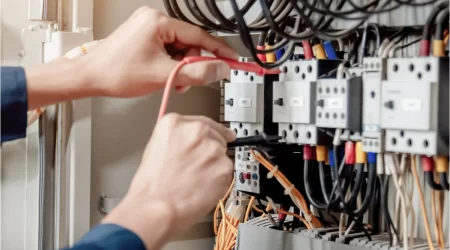Understanding Types of Power Thefts and Consequences
Power theft is a pervasive problem in cities across Pakistan, affecting the stability and safety of electrical grids, inflating costs for consumers, and creating significant safety hazards.
Understanding the types and impacts of power theft highlights the importance of addressing this issue through awareness, improved infrastructure, and strict enforcement.
Here are some types of power theft:
- Direct Tapping
Direct tapping involves connecting wires directly to power lines, completely bypassing the electricity meter, commonly known as the ‘kunda’ connection in Pakistan.
This is often done by attaching cables to utility poles or underground lines without authorization, allowing the user to consume electricity without being billed. It’s a common form of power theft in areas with limited monitoring, and it poses a serious safety hazard as it can lead to fires, electrocution, and power surges.
- Meter Tampering
Meter tampering involves physically manipulating the electricity meter to make it record less electricity than actually consumed. This can be done by placing magnets on the meter, reversing its wires, or physically damaging it.
Meter tampering can significantly lower recorded usage, allowing individuals or businesses to evade paying for their full power consumption. Utility companies often monitor meters for signs of tampering, and those caught face legal action and fines.
- Billing Fraud
Billing fraud occurs when individuals bribe officials or manipulate utility billing systems to reduce their monthly electricity charges. This is often seen in large businesses or industries where the cost of power is high, making it financially tempting to reduce bills through unethical means. Billing fraud not only contributes to revenue loss for the utility provider but also makes it harder to maintain fair and accurate billing practices for all users.
- Bypassing Circuits
Bypassing circuits involves installing devices or alternative wiring setups that redirect electricity around the meter. This method is often done within the home or business premises, making it harder to detect. Such setups may provide electricity directly to specific circuits or appliances without recording usage. Bypassing circuits can lead to unstable electricity supply and poses significant risks to other consumers by affecting the local power grid’s stability.
- Illegal Connections
Illegal connections refer to hooking up to the grid without proper authorization or resuming a connection after being disconnected by the utility provider. This type of theft often occurs in informal settlements or rural areas, where legal access to electricity may be limited. These unauthorized connections lack proper setup and can be dangerous, increasing the risk of accidents, power surges, and damage to electrical infrastructure.
Consequences of Power Theft
- Safety Hazards
Power theft poses severe safety risks. Improperly handled connections and unprofessional tampering with power lines or meters can lead to electrocution, fires, and accidental short circuits.
Direct tapping or using makeshift connections increases the risk of severe accidents for the individual involved, utility workers, and nearby residents. Additionally, overloaded transformers from illegal consumption may overheat, creating further fire hazards.
- Increased Costs for Consumers
Power theft leads to financial losses for utility companies, which they often offset by raising rates for paying customers. Honest consumers bear the cost of these losses, resulting in higher electricity bills and more expensive infrastructure maintenance. This unfair burden can especially impact low-income households who already struggle with utility costs.
- Grid Instability
Power theft contributes to grid instability, causing fluctuations, voltage drops, and power outages. Unauthorized consumption disrupts the balance of supply and demand within the grid, putting strain on equipment like transformers, wires, and substations.
Overloaded equipment may fail, leading to unexpected blackouts and affecting businesses, hospitals, and essential services that depend on a stable power supply.
- Legal Penalties
Legal consequences for power theft are strict and can include fines, imprisonment, or both. Many regions have stringent laws against power theft, with serious repercussions for those caught.
Utility companies collaborate with law enforcement to detect and prevent theft, using methods like smart meters, inspections, and surveillance. Repeat offenders may face progressively harsher penalties.
- Equipment Damage
Power theft leads to wear and tear on electrical infrastructure, causing frequent breakdowns and costly repairs. Overloaded lines, overused transformers, and tampered meters require extra maintenance and replacement, which increases operational costs for utility providers.
This also impacts consumers, as it leads to more frequent power outages and service interruptions. Additionally, damaged or strained equipment needs constant monitoring and repair, diverting resources from other critical infrastructure improvements.
Power theft not only undermines the financial stability of utility companies but also jeopardizes public safety, contributes to higher costs for honest consumers, and risks the reliability of the power grid.












Leave a Reply